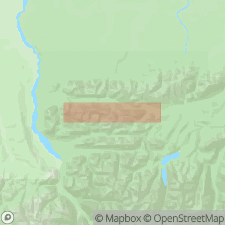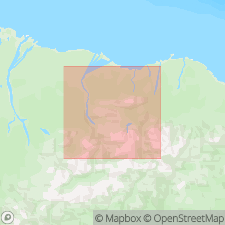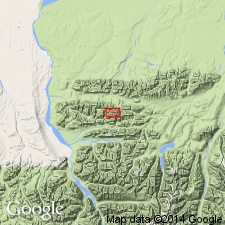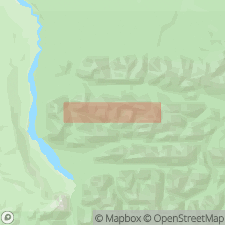
- Usage in publication:
-
- Nanook Limestone*
- Modifications:
-
- Named
- Biostratigraphic dating
- Dominant lithology:
-
- Limestone
- Dolomite
- AAPG geologic province:
-
- Alaska Northern region
Summary:
Named for Nanook Creek. Composite type section designated as exposures along south-flowing tributary to Nanook Creek on south flank of Shublik Mountains, secs.14 and 23 T2N R25E and sec.17 T2N R26E, Mount Michelson quad, northern AK. Crops out in Shublik and Sadlerochit Mountains. Consists of alternating light-gray limestone and medium-gray dolomite beds. Divided into 8 lithologic units. Redmarker unit in lowermost part contains orange weathering dolomite, stromatolites, and possible AMPHIPORA. Total thickness is about 3000 ft. Disconformably(?) overlies Katakturuk Dolomite (new). Unconformably underlies Kekiktuk Conglomerate. Age is Middle Devonian based on fossils in lower and upper parts of formation.
Source: GNU records (USGS DDS-6; Menlo GNULEX).

- Usage in publication:
-
- Nanook Limestone*
- Modifications:
-
- Age modified
- Biostratigraphic dating
- AAPG geologic province:
-
- Alaska Northern region
Summary:
Age is Late Proterozoic or Early Cambrian to Early and (or) Middle Devonian based on presence of corals, stromatoporoids, brachiopods, trilobites, tentaculitids, and crinoid ossicles, as well as stratigraphic relations with correlative(?) units [elsewhere] in Yukon Territory and east-central AK.
Source: GNU records (USGS DDS-6; Menlo GNULEX).

- Usage in publication:
-
- Nanook Limestone*
- Modifications:
-
- Age modified
- Biostratigraphic dating
- AAPG geologic province:
-
- Alaska Northern region
Summary:
Age is Late Proterozoic or Early Cambrian, Ordovician, and Early Devonian based on revised faunal age assignments from unit.
Source: GNU records (USGS DDS-6; Menlo GNULEX).

- Usage in publication:
-
- Nanook Limestone*
- Modifications:
-
- Revised
- Age modified
- AAPG geologic province:
-
- Alaska Northern region
Summary:
Nanook Limestone is stratigraphically restricted; Devonian strata of uppermost member [member 8 as defined by Dutro (1970)] are reassigned to (new) Mount Copleston Limestone based on stratigraphic, structural, and paleontologic criteria. Member 8 of the Nanook Limestone (Dutro, 1970) in the Sadlerochit Mountains further north are not so restricted. Age is Late Proterozoic or Early Cambrian and Early, Middle(?), and Late Ordovician accordingly.
Source: GNU records (USGS DDS-6; Menlo GNULEX).
For more information, please contact Nancy Stamm, Geologic Names Committee Secretary.
Asterisk (*) indicates published by U.S. Geological Survey authors.
"No current usage" (†) implies that a name has been abandoned or has fallen into disuse. Former usage and, if known, replacement name given in parentheses ( ).
Slash (/) indicates name conflicts with nomenclatural guidelines (CSN, 1933; ACSN, 1961, 1970; NACSN, 1983, 2005, 2021). May be explained within brackets ([ ]).

